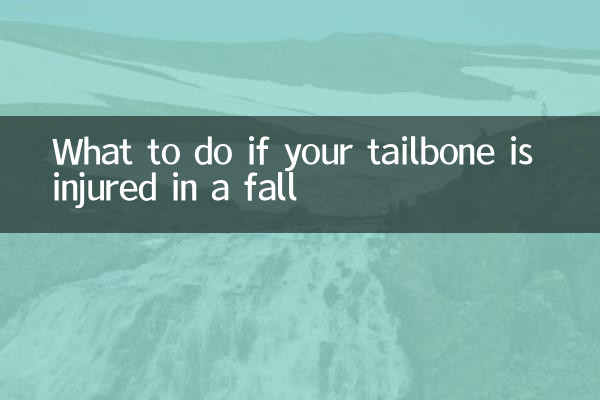What to do if your tailbone is injured in a fall
Tailbone fall is a common sports injury or accidental injury, especially in winter or during sports. The tailbone is located at the lowest end of the spine. A fall may cause severe pain, limited movement, and even affect daily life. This article will combine the hot topics and hot content on the Internet in the past 10 days to provide you with detailed handling methods and precautions.
1. Common symptoms of tailbone injuries

After a tailbone injury, patients usually experience the following symptoms:
| Symptoms | Description |
|---|---|
| local pain | Persistent or intermittent pain in the tailbone area, especially when sitting or touching |
| congestion and swelling | There may be bruising or swelling at the injured area |
| Restricted activities | Pain that worsens when bending, turning, or sitting, affecting normal activities |
| Discomfort during defecation | In severe cases, defecation function may be affected and defecation pain may occur. |
2. Emergency treatment of tailbone fall injury
If you accidentally fall and injure your tailbone, you can follow the following steps for emergency treatment:
| steps | Specific operations |
|---|---|
| 1. Cease activity | Immediately stop any activity that may worsen the injury and remain still |
| 2. Cold compress | Apply an ice pack or cold towel to the injured area for 15-20 minutes each time, repeat at 1 hour intervals |
| 3. Pain relief | Over-the-counter pain relievers such as ibuprofen can be used to relieve pain (with medical advice) |
| 4. Medical examination | If the pain is severe or persists, seek medical attention promptly for X-ray or MRI examination. |
3. Rehabilitation suggestions for tailbone injuries
Rehabilitation after a tailbone injury takes time and the right care:
| Rehabilitation measures | Things to note |
|---|---|
| Use special cushions | Choose a ring-shaped cushion with a hollow in the middle to reduce pressure on the tailbone |
| Maintain correct sitting posture | Avoid sitting for long periods of time. When sitting, lean slightly forward to reduce pressure on the tailbone. |
| moderate activity | Perform light activities within the pain range to prevent muscle stiffness |
| Heat relief | Hot compresses can be used to promote blood circulation 48 hours after the injury. |
| physical therapy | In severe cases, ultrasound treatment or professional rehabilitation training may be considered |
4. Serious situations that require vigilance
Although most coccyx injuries can heal on their own, you should seek immediate medical attention if:
| red flag | Possible problem |
|---|---|
| persistent severe pain | possible fracture or severe soft tissue injury |
| incontinence | May damage nerves and require emergency treatment |
| Fever or local redness, swelling, heat and pain | infection may occur |
| Pain that lasts more than 2 weeks | There may be chronic injuries or other problems |
5. Recommendations for preventing tailbone injuries from falls
Prevention is better than cure, here are some effective ways to prevent tailbone injuries:
| Precautions | Specific methods |
|---|---|
| Sports protection | Wear protective equipment when playing high-risk sports |
| environmental safety | Keep floors dry and free of obstructions, especially bathrooms and stairs |
| Increase muscle strength | Improve balance through core muscle training |
| Fall prevention for the elderly | Use anti-skid shoes, install handrails and other fall prevention measures |
6. Common misunderstandings about tailbone injuries
Regarding tailbone injuries, there are some common misunderstandings that need to be clarified:
| Misunderstanding | facts |
|---|---|
| "Don't worry about minor injuries" | Even minor injuries can develop into chronic pain |
| "The more it hurts, the more you need to move." | Excessive activity in the acute phase may aggravate the injury |
| "The sooner you apply heat, the better" | In the acute phase (within 48 hours), cold compresses should be used instead of hot compresses |
| "Tail vertebrae injuries will not cause fractures" | The tail vertebrae may indeed be fractured and require professional diagnosis |
Conclusion
Although tailbone injuries are common, proper treatment and recovery are crucial. Through the structured information in this article, I hope it will help you understand how to deal with a tailbone injury. Remember, it is important to seek prompt medical attention for severe or persistent symptoms. Preventive measures cannot be ignored, especially for the elderly and those who exercise regularly. Only by staying vigilant and responding scientifically can the inconvenience and pain caused by tailbone injuries be minimized.

check the details

check the details